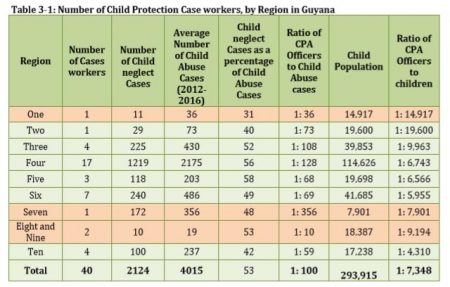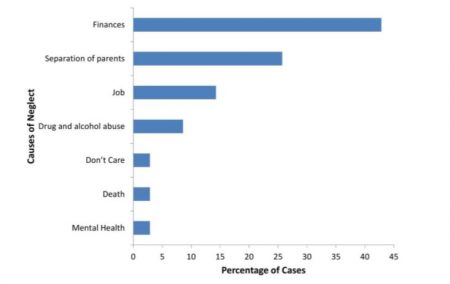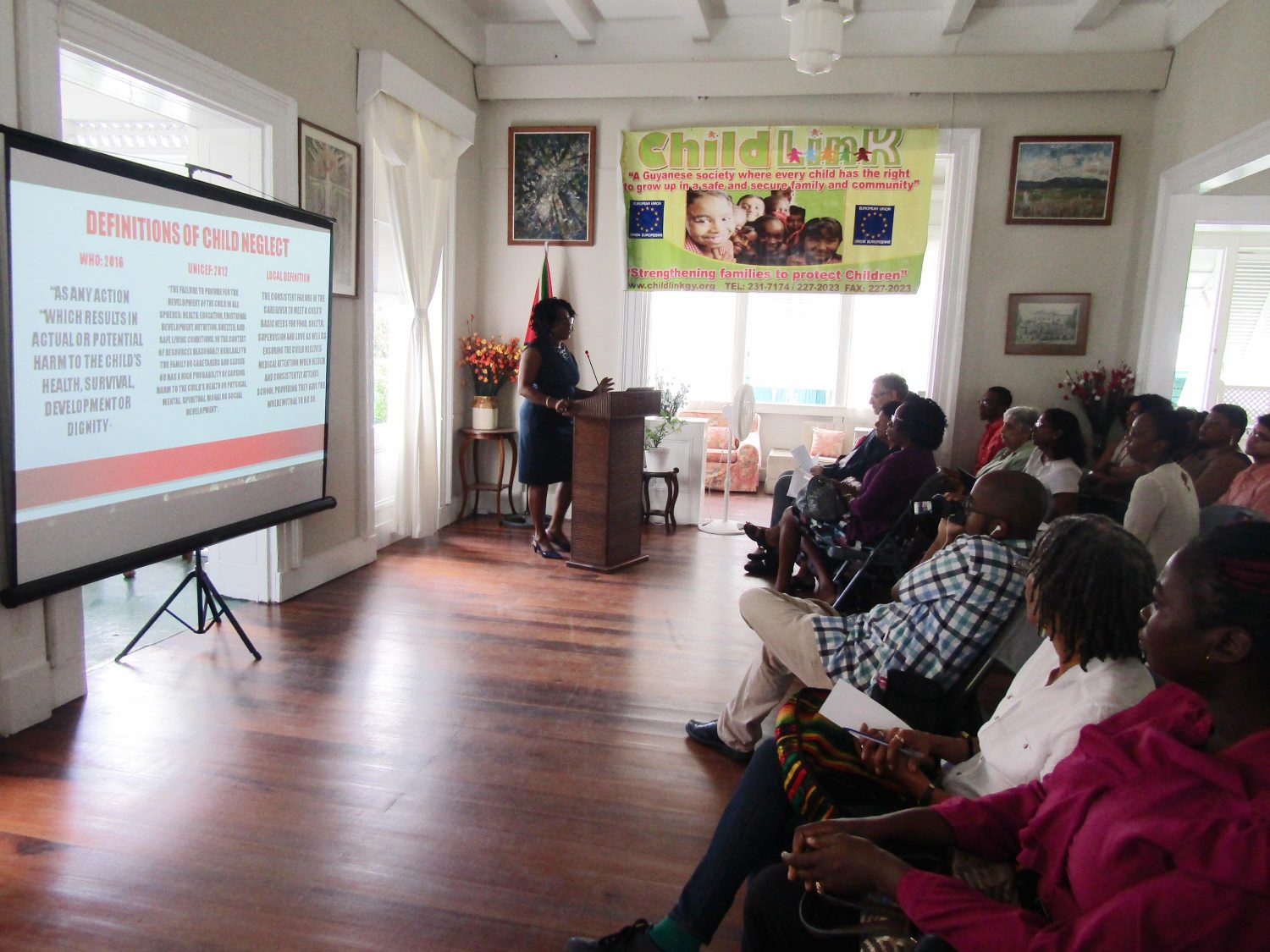A new study has found that lack of finances is the leading cause of child neglect in Guyana, with more than 40% of cases being the direct result of the financial shortcomings within the family.
The report, titled Child Neglect in Guyana, is the second in a series of four papers that will be produced under the Child Rights Alliance initiative (CRA). The CRA, according to the ChildLink website, is a collaboration of civil society, government agencies, the community and all stakeholders to protect at least 6,000 children from abuse. ChildLinK and the Rights of the Child Commission are the leading organisations in this alliance, which was established in 2016.
The neglect research, commissioned by ChildLink, is intended for use to “engage all key stakeholders with the findings and promote the introduction of evidence based advocacy to influence policies and actions to safeguard and protect children.”
The report was presented yesterday during an engagement held at the Moray House Trust, where Director of the Childcare and Protection Agency Ann Green as well as Ambassador of the Delegation of the European Union Jernej Videtic were in attendance.
 The definition of child neglect in the local context, as provided yesterday, was drafted based on consultations during the study. It said child neglect is “the consistent failure of the caregiver to meet a child’s basic needs for food, shelter, supervision and love, as well as ensuring the child receives medical attendance when needed and consistently attends school providing that they have the wherewithal to do so.”
The definition of child neglect in the local context, as provided yesterday, was drafted based on consultations during the study. It said child neglect is “the consistent failure of the caregiver to meet a child’s basic needs for food, shelter, supervision and love, as well as ensuring the child receives medical attendance when needed and consistently attends school providing that they have the wherewithal to do so.”
According to the report, “the most observed causes of neglect were directly related to the lack of finances which in some cases was the result of unemployment; separation of parents; type of work in which caregivers are engaged and drug and alcohol abuse.”
 University lecturer Paulette Henry, who was also the researcher, presented the findings yesterday.
University lecturer Paulette Henry, who was also the researcher, presented the findings yesterday.
“When we look at family income, 46% of the households that we surveyed were earning less than US $1.09. That is an indicator of where they are located and what may be happening because when you also look at the individual graphs, you find that the bulk of them are earning less than $30,000 per month,” Henry stated.
The report states that 60% of the families that participated in the study earn $50,000 or less monthly, with 40% are earning $30,000 and below. Only 12% of the families surveyed were found to earn more than $70,000 a month.
It was further stated that according to the World Bank’s definition of poverty, which states that anyone living on less than US $1.90 per day is poor, 46% of the families could be categorised as poor.
The research surveyed caregivers in regions 3, 4, 5, 6, 7 and 10. It was stated that while the interior locations could not be accessed due to limitations, such as terrain and cost, information was provided by the Child Care and Protection Agency.
Another noted limitation in the study was the absence of data for children in the 0 to 3 age category, but it was suggested that that data could be acquired through collaboration with the Ministry of Public Health.
‘Conditioned’
The study explored child neglect in terms of physical neglect, emotional neglect, medical neglect and educational neglect.
In a video shown to the audience, a group of children, most appearing to be pre-teens, responded to questions posed to them about child abuse.
Nearly every child in the video listed “protection” as one of the rights of children, and most, when asked what made them sad, said either receiving or watching others receive “licks”.
They were also asked how they feel when they are beaten and whether they would beat their own children.
Although all the children indicated that they either feel sad or angry when they receive “licks,” most made sure to add that they felt that way because they knew they had done something wrong.
Notably, the majority of the participants went on to say that they would beat their own children, but noted that they would not beat them too badly.
“As much as the children hate the abuse, they justify the abuse. They said it’s okay because I did something wrong… so we have a lot of work to do with the children because they have already been conditioned that it is okay,” Colleen Anthony, Commissioner on the Rights of the Child Commission and Chairman of yesterday’s programme said.
The Child Neglect report states that from 2013 to 2016, there were 12,917 reported cases of abuse and 6,448 cases of neglect recorded.
According to the statistics in the report, the ratio of Child Protection Officers to child abuse cases in Guyana is 1:100, with region seven recording a ratio of 1:356 (one officer to 356 children).
Green had stated that Region 7 has the highest rate of child abuse in the country, followed by Region 1.
Among the recommendations of the report are the establishment of a Special Victims’ Unit; 24-hour service provision for children, evidence-based research from the University of Guyana related to gaps existing in research on child neglect and abuse; reintroduction of a child protection and monitoring information system; functioning national and regional rights of the child commissions; and a more realistic ratio of school welfare officers to schools (1:5 as opposed to 1:22)










